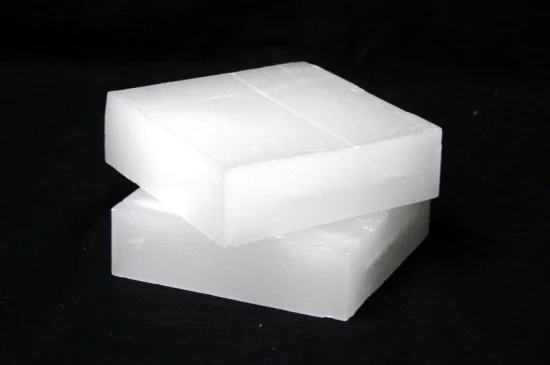Microcrystalline waxes and paraffin waxes are the two most common types of petroleum-derived waxes. Whilst both are derived from petroleum, the processes used to extract them are slightly different and the subtle differences in their molecular composition mean that they are suitable for different uses and industries.
A surprising number of various applications can use these waxes. However, it is important to understand the differences between the two to know which type is best suited for your needs. Let’s take a closer look at the differences between microcrystalline wax and paraffin wax.
Microcrystalline waxes are a special type of petroleum-based wax originally derived from crude oil. During the petroleum refining process, the crude oil is de-oiled and left with this unique wax. Microcrystalline waxes have a smaller crystal structure than other types of waxes, making them more viscous and flexible. The main microcrystalline properties may vary slightly depending on their degree of refining. Depending on the stage of the refining process, the colour may also vary from white to a more brownish hue.
Due to its unique properties, microcrystalline wax is versatile and used in many different industries. Some of the most common uses for microcrystalline wax include:
Health and beauty products: Many ointments, lotions, moisturisers, sunscreens and other products contain microcrystalline wax. This material helps give products the proper viscosity and keep them soft.
Cosmetics: Microcrystalline wax helps waterproof mascara, is used as a binder in powders, and gives structure to lipsticks, eyeliners and lip liners, preventing the product from crumbling.
Grease Thickeners: This wax is used as a thickener or to strengthen products in a variety of grease and gel products.
Sports Equipment: Microcrystalline wax is used on skis and snowboards to reduce friction and help them glide more easily on snow. It also provides more control for skiers or snowboarders. The wax is also commonly used in the sport of hockey to protect all parts of the hockey stick and give players better control of the puck.
Additives for other waxes: Small amounts of microcrystalline waxes can be added to other waxes, such as paraffin wax, to improve texture, flexibility, water resistance and other properties.
Adhesives: Microcrystalline waxes are also sticky and can be used by individuals as an adhesive for a variety of projects, including bookbinding and carpet backing.
Paraffin is another wax derived from petroleum, but it can also come from coal or oil shale. Various processes, including solvent dewaxing and solvent degreasing, can refine petroleum to produce paraffin wax.
This unique type of wax is also commonly referred to as a crystalline wax and is classified as a hydrocarbon mixture. The main properties of paraffin waxes may vary slightly, depending on the refining process and the use to which the wax is put. In general, paraffin wax is usually colourless and has a relatively low melting point. It is insoluble in water and is ideal for storing heat and for electrical insulation.
Paraffin wax has a wide range of applications and uses across many different industries. Some of the most common uses of paraffin wax include:
Candles: One of the earliest known uses of paraffin was to replace tallow as the main ingredient in candles. Paraffin wax provides a cleaner, brighter burn.
Crayons: Paraffin wax is the main ingredient in children’s craft crayons. Paraffin gives crayons their unique waxy texture and can be dyed in a myriad of colours.
Waterproof Products: Paraffin wax is used as a waterproofing agent and is added to many different products, including matches, wood, bottles and a variety of protective packaging.
Sports equipment: Skiers, snowboarders and surfers also use paraffin wax to help reduce friction and glide more easily over snow or water.
Spa treatments: Paraffin wax is commonly used in spas and salons as an emollient applied to hands, feet and other parts of the body to provide a moisturising treatment for dry skin.
Protecting Produce: Many types of fresh fruits and vegetables are coated with a thin layer of paraffin wax to extend their shelf life, retain moisture and make them look more attractive.
Candy coatings: Small amounts of paraffin wax are sometimes added to coatings of chocolate and other candies. This layer of wax protects the candies and makes them shine.
In addition to these most common uses, paraffin wax is used to insulate electrical components and as a pharmaceutical coating. Industries also use paraffin wax in cosmetic applications, waxed paper, baking containers, and as an additive in rubber and many other products.
Microcrystalline waxes and paraffin waxes are both derived from petroleum and have many similar properties and uses. But they are very different, and there are some key differences. One of the biggest differences occurs at the molecular level. The molecular size of these materials varies, with microcrystalline waxes having a more branched molecular structure than paraffin waxes.
This molecular composition gives each type of wax slightly different properties. Paraffin wax has a lower melting temperature and better burning qualities, which is why this material is ideally suited for making candles. These waxes also act as a better moisture barrier. Microcrystalline waxes tend to be thicker and tougher, but have better flexibility and elasticity. These waxes are also better suited for adhesive product applications. While paraffin waxes are usually colourless or have a light blue tint, microcrystalline waxes range from white to dark brown.
Both microcrystalline and paraffin waxes have an amazing array of possible uses. But they can also be combined into different blends to produce waxes suitable for customised uses. AODING waxes combine the best properties of both to bring you a wax that is perfectly suited to your needs. Whether you need a certain kind of wax or a customised blend, AODING waxes can help you.
At Odin Wax we know our customers and their needs. We are ready to work with you to create customised wax blends with a formulation solution that best suits your product. Contact us today to learn more about our products or to get started with your custom wax.


AODING Group One- Stop Service for Candle-making.